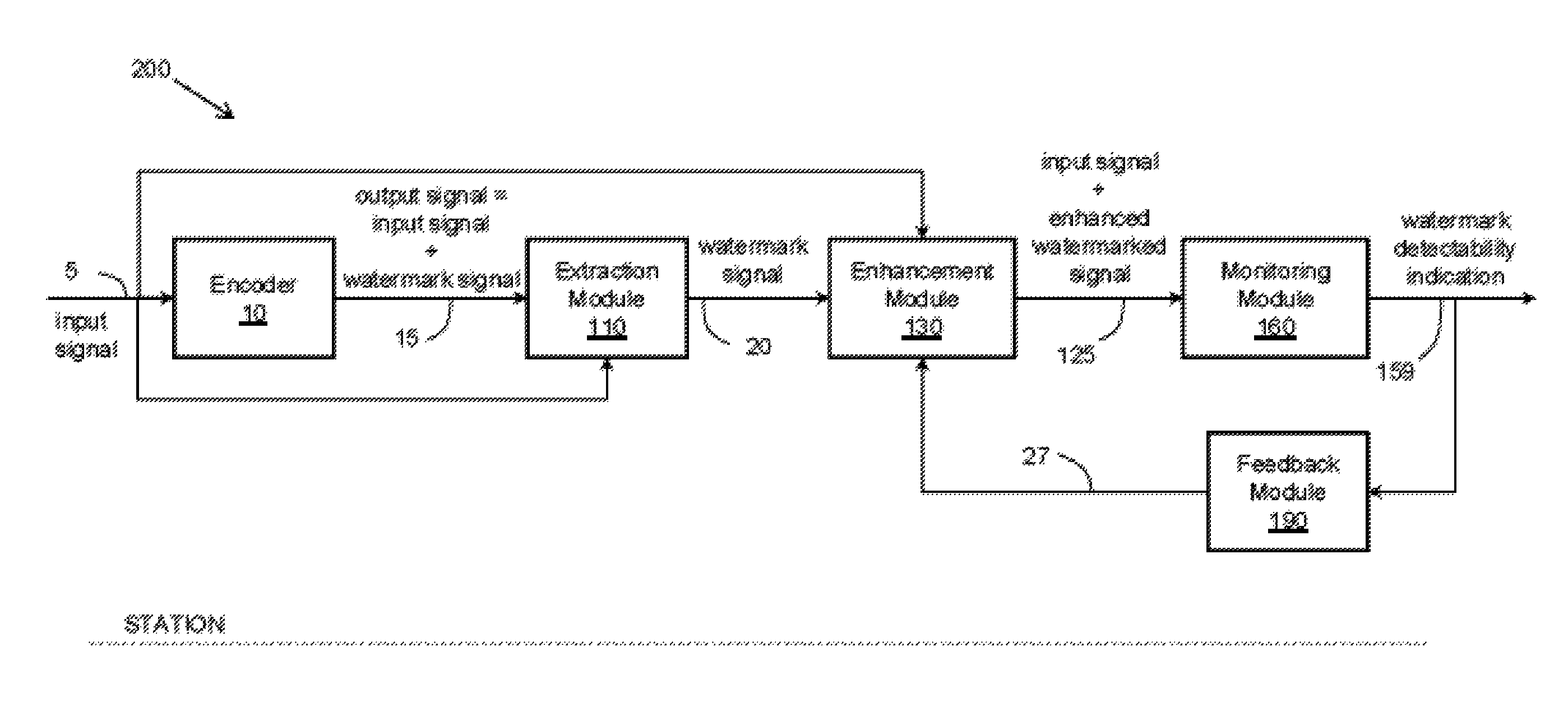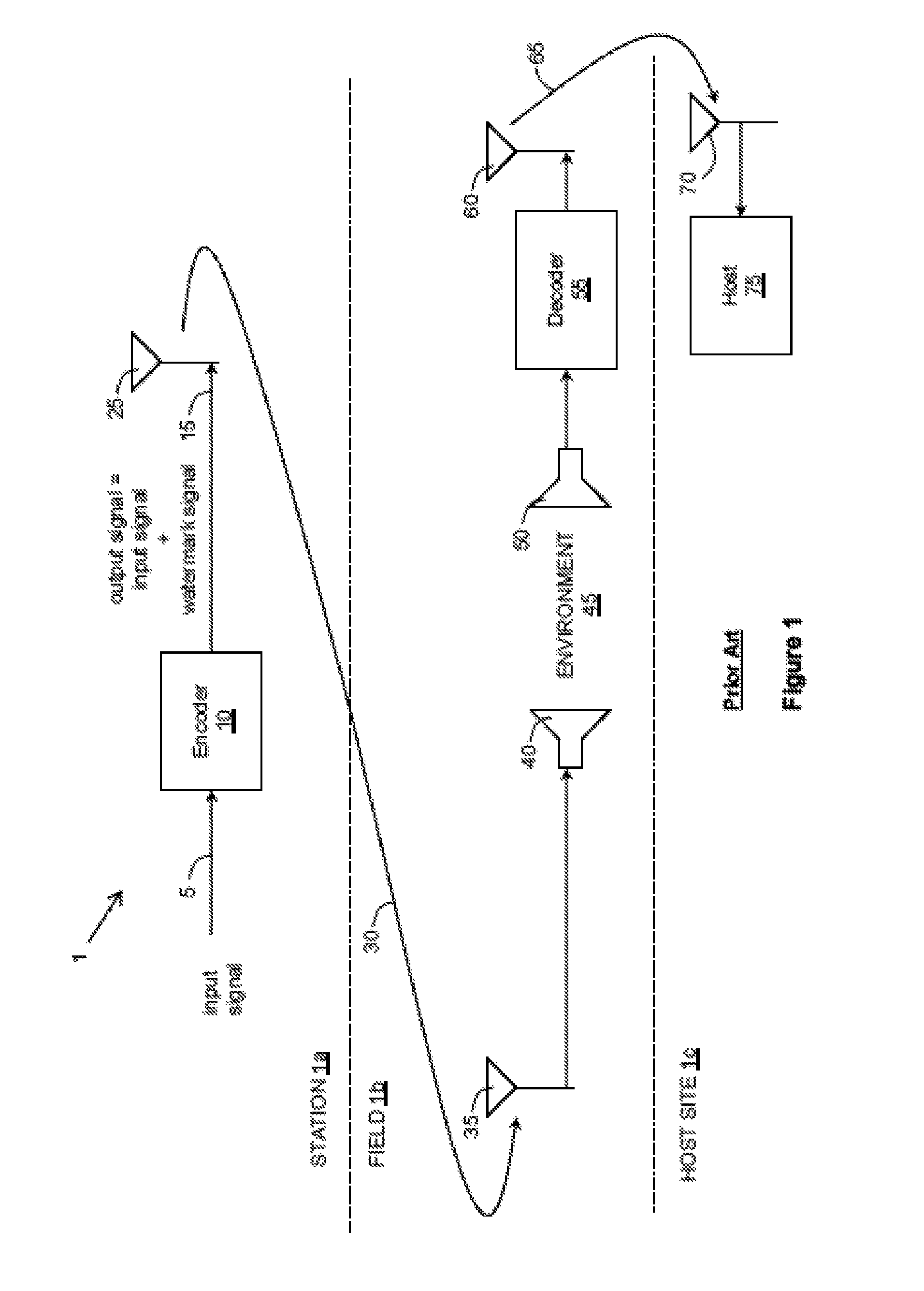Feedback and simulation regarding detectability of a watermark message
a detection and watermark technology, applied in the field of audio processing, can solve the problems of inability to detect watermarks, sacrificing reliability, and failures in reliability that are not uniformly distributed across the broadcast population, so as to increase the probability of watermark detection, improve reliability, and improve the effect of audible degradation
- Summary
- Abstract
- Description
- Claims
- Application Information
AI Technical Summary
Benefits of technology
Problems solved by technology
Method used
Image
Examples
Embodiment Construction
[0050]Although the present disclosure describes various embodiments in the context of watermarking station identification codes into the station audio programming to identify which stations people are listening to, it will be appreciated that this exemplary context is only one of many potential applications in which aspects of the disclosed systems and methods may be used.
[0051]FIG. 1 illustrates a simplified block diagram of an exemplary prior art system 1 for electronic watermarking. The system 1 includes at least two portions, a portion at the station 1a and a portion at the field 1b. The station 1a corresponds to the facilities where broadcasting takes place. The field 1b corresponds to the places where listeners listen to the broadcast. The field 1b could be a home, place of work, car, etc.
[0052]The main component of the watermarking system 1 at the station 1a is the watermarking encoder 10. One example of a watermarking encoder 10 is the encoder that forms part of the Portable...
PUM
 Login to View More
Login to View More Abstract
Description
Claims
Application Information
 Login to View More
Login to View More - R&D
- Intellectual Property
- Life Sciences
- Materials
- Tech Scout
- Unparalleled Data Quality
- Higher Quality Content
- 60% Fewer Hallucinations
Browse by: Latest US Patents, China's latest patents, Technical Efficacy Thesaurus, Application Domain, Technology Topic, Popular Technical Reports.
© 2025 PatSnap. All rights reserved.Legal|Privacy policy|Modern Slavery Act Transparency Statement|Sitemap|About US| Contact US: help@patsnap.com



